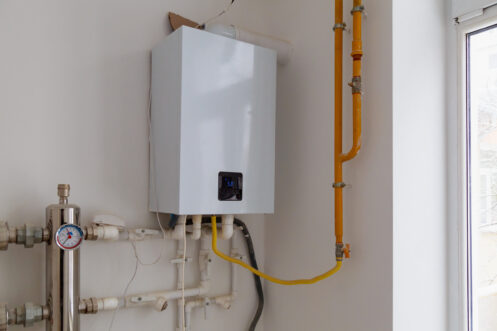Important Care Strategies for Your Home's Hot Water System
Important Care Strategies for Your Home's Hot Water System
Blog Article
We've found this post pertaining to What Kind of Maintenance Do Water Heaters Need? down the page on the net and thought it made good sense to discuss it with you over here.

Warm water is necessary for everyday convenience, whether it's for a revitalizing shower or cleaning recipes. To guarantee your hot water system runs efficiently and lasts much longer, routine maintenance is essential. This article gives functional tips and understandings on exactly how to maintain your home's warm water system to prevent disruptions and expensive repair work.
Introduction
Preserving your home's hot water system could appear complicated, but with a couple of easy actions, you can ensure it runs smoothly for years to find. This guide covers whatever from understanding your warm water system to DIY maintenance suggestions and recognizing when to contact specialist assistance.
Relevance of Preserving Your Warm Water System
Normal upkeep not only prolongs the lifespan of your hot water system yet additionally guarantees it runs effectively. Disregarding maintenance can cause lowered effectiveness, greater energy expenses, and also premature failure of the system.
Indicators Your Hot Water System Requirements Upkeep
Knowing when your warm water system requires attention can stop significant issues. Watch out for indicators such as inconsistent water temperature, weird sounds from the heater, or rustic water.
Recognizing Your Hot Water System
Before diving right into upkeep jobs, it's useful to comprehend the standard parts of your hot water system. Normally, this consists of the hot water heater itself, pipes, anode rods, and temperature controls.
Regular Monthly Upkeep Tasks
Normal monthly checks can help capture small problems prior to they intensify.
Flushing the Water Heater
Flushing your water heater eliminates debris accumulation, boosting performance and lengthening its life.
Checking and Changing Anode Rods
Anode poles prevent corrosion inside the tank. Examining and replacing them when worn out is essential.
Examining and Changing Temperature Settings
Adjusting the temperature settings makes sure optimum efficiency and safety and security.
Do It Yourself Tips for Maintenance
You can do several maintenance tasks on your own to maintain your warm water system in leading condition.
Checking for Leaks
On a regular basis check pipes and connections for leaks, as these can bring about water damages and greater costs.
Checking Pressure Relief Valves
Testing the stress safety valve ensures it works properly and avoids excessive stress build-up.
Protecting Pipes
Insulating hot water pipelines minimizes warm loss and can save power.
When to Call an Expert
While DIY upkeep is advantageous, some issues call for expert proficiency.
Facility Problems Requiring Expert Help
Instances include significant leakages, electrical issues, or if your water heater is regularly underperforming.
Routine Expert Maintenance Conveniences
Professional upkeep can include thorough evaluations, tune-ups, and making certain compliance with safety and security requirements.
Conclusion
Routine upkeep of your home's hot water system is necessary for efficiency, long life, and cost financial savings. By complying with these pointers and understanding when to look for specialist help, you can make sure a dependable supply of warm water without unexpected interruptions.
How to Maintain an Instant Hot Water Heater
Before tinkering with your hot water heater, make sure that it’s not powered on. You also have to turn off the main circuit breaker and shut off the main gas line to prevent accidents. Also turn off the water valves connected to your unit to prevent water from flowing into and out of the appliance. 2. When you’re done, you have to detach the purge valves’ caps. These look like the letter “T†and are situated on either side of the water valves. Doing so will release any pressure that has accumulated inside the valves while at the same time avoid hot water from shooting out and burning your skin. 3. When the purge valves’ caps are removed, you have to connect your hosing lines to the valves. Your unit should have come with three hoses but if it didn’t, you can purchase these things from any hardware or home repair shops. You can also get them from retail stores that sell water heating systems. Read the user’s manual and follow it to complete this task properly. When the hosing lines are connected, open the purge port’s valves. 4. You should never use harsh chemical cleaners or solutions when cleaning your unit. Make use of white vinegar instead. It should be undiluted and you’ll probably use about 2 gallons. 5. Now flush your water heater. This task should probably take about 40 minutes. We can’t give you specific directions for this because the procedure is carried out depending on the type, model and brand of your heater. With that being said, refer to the user’s manual. 6. When you’re done draining the unit, you have to turn off the purge port valves again. Remove the hosing lines that you earlier installed on each of the water valves. Put the valve caps (purge port) back in their respective places and be very careful so as not to damage the rubber discs that are found inside these caps. 7. Now that everything’s back in place, check your user’s manual again to find out how to reactivate your water heating system. 8. Once it is working, turn one of your hot water faucets on just to let air pass through the heater’s water supply pipes. Leave the tap on until water flows smoothly out of it. https://www.orrplumbing.com/blog/2014/september/how-to-maintain-an-instant-hot-water-heater/

Do you really like more info about How to Maintain Your Water Heater & Prolong its Life? Post a comment down the page. We would be happy to know your ideas about this blog entry. We hope that you visit us again soon. Kindly take a moment to distribute this article if you liked it. Thanks so much for taking the time to read it.
Book Today! Report this page